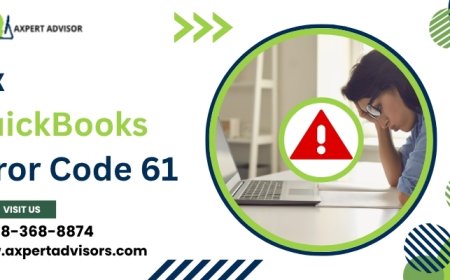Can You Sue for Emotional Distress in the USA? (2024 Guide)

Emotional distress can be just as debilitating as physical injuries, leaving lasting psychological scars. If someones intentional or negligent actions have caused you severe emotional suffering, you may wonder:Can you sue for emotional distress in the USA?
The short answer isyes, but proving emotional distress in court can be challenging. This guide will explain the legal grounds for emotional distress claims, the types of cases that qualify, how to prove your claim, and what compensation you may receive.
What Is Emotional Distress?
Emotional distress refers to significant mental suffering caused by someone elses actions. This can include:
-
Anxiety and depression
-
Post-traumatic stress disorder (PTSD)
-
Sleep disturbances
-
Humiliation or embarrassment
-
Loss of enjoyment of life
Unlike physical injuries, emotional distress is invisible, making it harder to prove in court. However, with the right evidence, victims can seek justice and compensation.
Types of Emotional Distress Claims
There are two main types of emotional distress claims in the U.S.:
1. Intentional Infliction of Emotional Distress (IIED)
This occurs when someone deliberately acts in an extreme or outrageous manner, causing severe emotional harm. Examples include:
-
Bullying or harassment(e.g., workplace bullying, cyberbullying)
-
Defamation(false statements that damage reputation)
-
Witnessing a traumatic event(e.g., seeing a loved one harmed)
To win an IIED case, you must prove:
? The defendants conduct was intentional or reckless.
? The behavior was extreme and outrageous.
? The actions directly caused severe emotional distress.
2. Negligent Infliction of Emotional Distress (NIED)
This applies when emotional distress results from someones negligence (carelessness). Common scenarios include:
-
Car accidents(e.g., PTSD after a crash)
-
Medical malpractice(e.g., misdiagnosis leading to trauma)
-
Wrongful death cases(family members suffering grief)
NIED claims often require:
? A physical injury (in some states) or being in a "zone of danger."
? Proof that the defendants negligence caused the distress.
How to Prove Emotional Distress in Court
Since emotional distress isnt visible, strong evidence is crucial. Heres what can help your case:
1. Medical Documentation
-
Therapist or psychiatrist records(diagnosis of anxiety, PTSD, etc.)
-
Prescription medications(antidepressants, sleep aids)
-
Hospitalization records(if stress led to physical health issues)
2. Witness Testimony
-
Family/friendswho observed changes in your behavior
-
Coworkerswho noticed work performance decline
-
Expert witnesses(psychologists explaining your condition)
3. Personal Documentation
-
Journal entriesdetailing daily struggles
-
Photos/videosshowing emotional breakdowns
-
Employment records(if distress caused job loss)
4. Evidence of the Defendants Conduct
-
Texts, emails, or social media posts(in harassment cases)
-
Police reports(if applicable)
-
Surveillance footage(e.g., in assault cases)
Can You Sue for Emotional Distress Without Physical Injury?
Yes, but it depends on state laws. Some states require a physical injury, while others allow "standalone" emotional distress claims. For example:
-
Californiapermits NIED claims without physical injury.
-
New Yorkoften requires a physical injury or being in a "zone of danger."
An experienced attorney can help determine if your case qualifies.
How Much Compensation Can You Get?
Emotional distress damages vary based on severity and case type. Compensation may include:
1. Economic Damages
-
Therapy and medical bills
-
Lost wages(if unable to work)
2. Non-Economic Damages
-
Pain and suffering
-
Loss of enjoyment of life
3. Punitive Damages (in extreme cases)
-
Awarded to punish malicious or reckless behavior.
Average settlementsrange from$5,000 to $100,000+, with extreme cases (e.g., wrongful death, severe harassment) reaching millions.
Famous Emotional Distress Cases
-
Campbell v. Animal Quarantine Station (Hawaii, 1986)
-
A woman won $50,000 after her dog was wrongly euthanized, causing severe grief.
-
-
Taylor v. Metzger (New Jersey, 1998)
-
A Black employee received $1 million after her supervisor used a racial slur.
-
-
Liebeck v. McDonalds (1994)
-
While known for burns, emotional trauma was also considered in the $2.9M verdict.
-
When Should You Sue for Emotional Distress?
Consider legal action if:
?? Your distress is severe and ongoing.
?? You have medical proof.
?? The defendants actions were intentional or negligent.
However, lawsuits can be lengthy and emotionally draining. Consult a lawyer to weigh your options.
How to File an Emotional Distress Lawsuit
-
Consult a Personal Injury Lawyer
-
Theyll assess your case and gather evidence.
-
-
File a Complaint
-
Your attorney will draft legal documents outlining your claim.
-
-
Negotiate or Go to Trial
-
Many cases settle out of court, but some proceed to trial.
-
-
Receive Compensation
-
If successful, youll be awarded damages.
-
Can You Sue for Emotional Distress in Small Claims Court?
Yes, but compensation is limited (usually$5,000$10,000). Small claims court is best for minor distress cases without extensive medical treatment.
Bottom Line: Should You Sue for Emotional Distress?
If someones actions have left you with lasting psychological harm,you have the right to seek justice. While emotional distress cases are complex, strong evidence and legal representation can lead to fair compensation.
If youre considering a lawsuit,consult an attorneyto discuss your options.
Need Legal Help? Contact Uorni Today!
AtUorni, we understand how emotional trauma can disrupt your life. Our experienced attorneys can help you build a strong case and fight for the compensation you deserve.








































